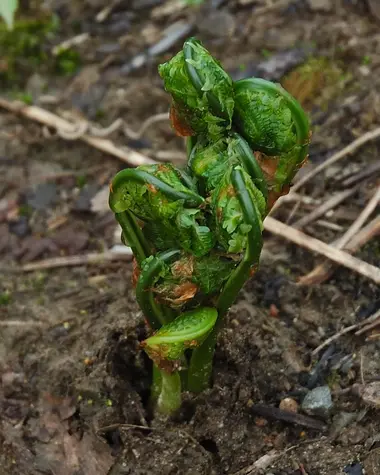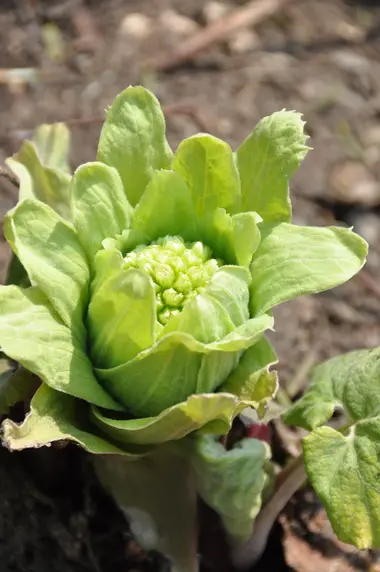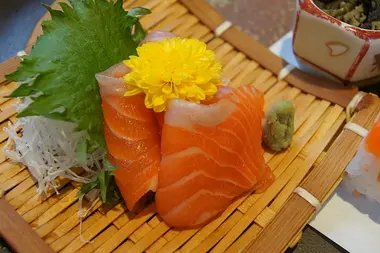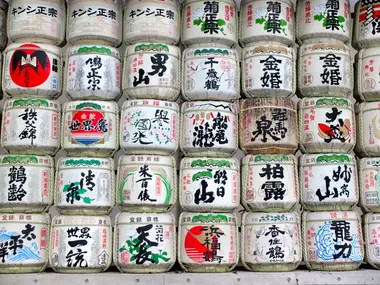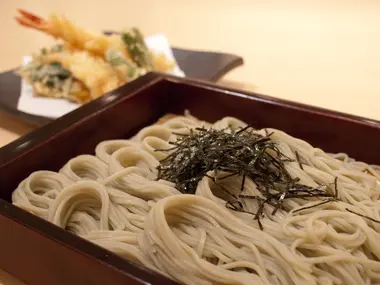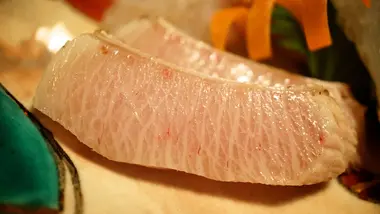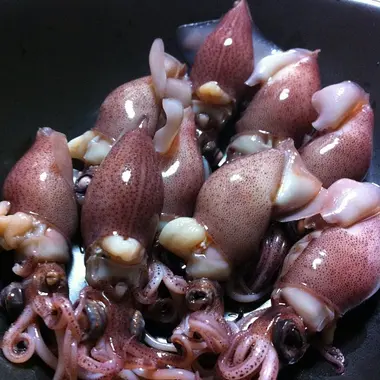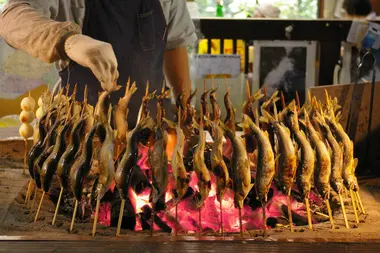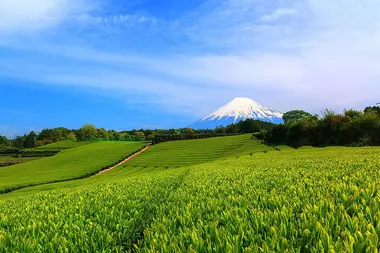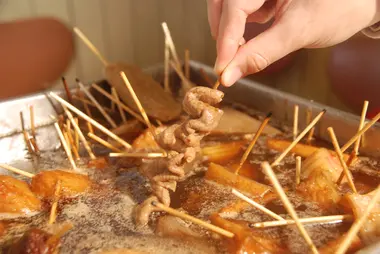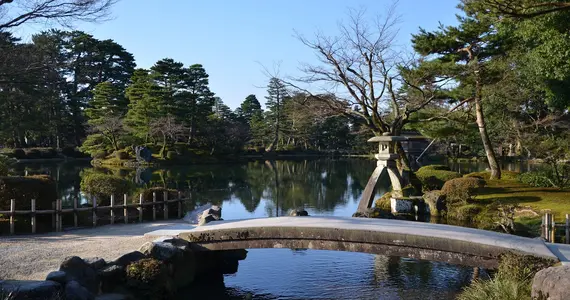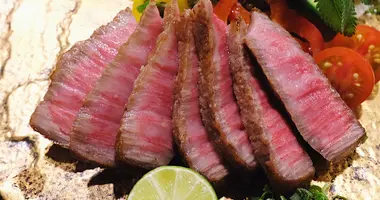The Food Specialties to try in the Japanese Alps
Within the literal heart of Japan exist a series of mountain ranges that bisect the main island of Honshu. Dubbed “the Japanese Alps” by English missionaries in the 19th century, the history of this natural landmark and the areas they loom over go way back, a source of both spiritual needs and natural resources.
The unique and rich geography that spawns around these mountain ranges has contributed to the culinary identity of the region. We’ll take a look at some of the most distinct and authentic dishes to come from the prefectures of Nagano, Niigata, Toyama, Gifu, and Shizuoka to form a better understanding of an area that is lauded as much for its cuisine as it is for its awe-inspiring scenery.
Nagano- From the rivers to the mountains
The geographically wide and inland prefecture of Nagano is a one-and-a-half-hour, direct Shinkansen ride away from the bustling capital city of Tokyo.
This prefecture initially gained international fame due to its hosting of the 1998 Winter Olympics, a testament to the relevance of the mountainous terrain to the region. But aside from recreation, the mountains of Nagano also play an important role in the local food culture.
Sansai 山菜
Sansai literally translates to “mountain vegetables” and is a staple of Japanese cuisine during the warmer months. As the name implies, these wild vegetables grow on the slopes of mountains and are often harvested via foraging.
The wild nature of these plants results in a large variety, and in Nagano, upwards of 50 different types are often picked for use in both home cooking and local restaurants.
In Nagano, the most commonly picked varieties include kogomi (fiddlehead ferns), takenoko (bamboo shoots), and fukinoto (butterbur).
Sansai are often cited as having a wild, often bitter flavor. Though, with proper preparation, the bitterness is often subsided and provides a deep and rich umami to a variety of dishes.
Foraging for sansai can be done with guides in the areas around Lake Nojiri and, notably, at Nozawa Onsen.
Shinshu Salmon (信州サーモン)
The prefecture that is now Nagano was formerly named Shinshu Province prior to the inception of prefectures after the Meiji Restoration. Within Nagano, references to this old name can be found often, including in food.
Despite Nagano being an inland prefecture away from the ocean, it still boasts one of the most celebrated fish currently being cultivated in Japan: Shinshu Salmon.
This farmed salmon is a relatively new species. It is the product of cross-breeding two types of trout indigenous to Nagano’s freshwater bodies: the brown trout and the rainbow trout.
Nagano’s high elevation and proximity to the mountains of the Japanese Alps make its climate perfect for the cultivation of such fish. Domestic fish options have been pushed more and more within Japan in the last few years, especially with the popularity of dishes like salmon sushi that were actually initially introduced to the Japanese diet via Norway.
Shinshu salmon is noted for its buttery fat, mild flavor, and soft flakiness. Despite being a freshwater fish, it is safe for raw consumption and is often served as such in donburi (rice bowl dishes).
Niigata- The storied sake producer of the Japanese Alps
Heading towards the coast of the Sea of Japan from Nagano leads into Niigata Prefecture. Its location within the Japanese Alps and its long coastline make it a geographically unique area, boasting prime locations for both winter sports and beach-faring.
Niigata Sake
Home to around 90 different sake breweries (the most of any prefecture in Japan), Niigata’s history with brewing the country’s signature alcoholic beverage is very apparent.
Amongst enthusiasts of the drink, Niigata is considered a forerunner in quality, and it’s due to a number of factors. One of these factors is linked to the climate brought on by the mountainous geography.
The snowy winters provide the prefecture with high-quality water during the colder seasons, and once things warm up, sunlight is plentiful with long days that contribute to the high-quality rice crop that Niigata is also famous for.
The sheer number of different breweries makes them cater to more local markets within the prefecture, but some of the most famous ones don’t even exist on Japan’s mainland.
Sado Island is located off the coast of Niigata Prefecture and is accessible via a ferry ride that takes 1-2 hours, depending on the type of boat. Here, beautiful nature can be observed while sampling sake at the breweries of Hokusetsu Shuzo, Obata Shuzo, and more!
Hegi Soba
To fully appreciate the culinary identity of any given region, it’s best to ask the locals about the foods they most identify with the area. In the case of the people of Niigata, they will almost always answer Hegi Soba.
The name “hegi soba” refers to the wooden tray that the soba noodles are served on, which is called a “hegi.” This variation of noodle is largely synonymous with the area of Uonuma.
Soba noodles, by definition, are made of buckwheat flour, but what differentiates this iteration from Niigata from other soba noodles is the incorporation of funori seaweed, which gives the noodles a bit more of a smooth mouthfeel, but firm chew.
In addition to being served on the hegi tray, the noodles are often separated in bunches by mouthful, contributing to their unique presentation. When eaten, an assortment of garnishes such as kurashi (spicy Japanese mustard), wasabi, and green onions are often served alongside the noodles.
For the residents of Niigata, hegi soba is often reserved for special occasions and celebrations. However, for travelers with a culinary intrigue, there are special soba tours available in the prefecture for hungry visitors to sample hegi soba from a variety of locations and restaurants.
Toyama- Between the alps and the sea
The name “Toyama” literally translates to “abundance of mountains,” and it is a prefecture that very much lives up to its name. Blessed with the Tateyama Mountain Range of the Japanese Alps that extends inland out to the sea, Toyama has some of the most celebrated natural views in the country.
Buri from Himi
The seas and mountains collaborate and contribute to Toyama’s most famous landmark: Toyama Bay.
The glaciers of the mountains in Toyama melt and flow into the bay, making the waters notably cold and rich in nutrients, providing ideal conditions for sea life to flourish.
Throughout, not just Japan, but the world, the waters of this bay are known to be home to some of the most sought-after seafood, prized not only for its quality but unique offerings as well.
This is especially notable in the winter, when the fish become especially fatty. Buri (Japanese amberjack) is a staple of Toyama cuisine, and the ones caught from the port of Himi City are distributed to the most revered omakase sushi restaurants throughout the world.
Another common buri dish in Toyama is buri shabu, where slices of fresh, fatty buri are quickly poached in a light, often citrus-infused broth mixed with fresh vegetables.
Hotaru Ika and Shiroebi
Two of the most distinct catches to come from Toyama Bay are hotaru ika (firefly squid), and shiroebi (glass shrimp).
During spring, hotaru ika come up in large numbers and illuminate the bay, as, like their name implies, they are capable of bioluminescence. Hotaru ika are often eaten whole and prepared simmered, tempura-fried, or grilled.
Toyama Bay is the only body of water where shiroebi can be legally fished for commercial reasons, as it is the only location in the world with enough numbers that are sustainable.
Shiroebi are individually very small and were initially used as bait for local fishermen. Nowadays, the delicacy is de-shelled and served in bunches as sashimi or in gunkan sushi.
It is also often served fried with salt. The color and treasured nature of the shrimp have led to Shiroebi being dubbed “the jewel of Toyama Bay.”
Gifu- A land of valleys and mountain-tops
Moving away from the Japan Sea, Gifu Prefecture covers a wide area in central Honshu.
Much like Nagano, Gifu exists fully inland without a coast and is predominantly dominated by the mountainous terrain of the Japanese Alps. Driving through the prefecture entails traversing mountain roads that loop down into lush valleys. Laced in between these valleys exist towns and communities with rich food cultures.
Hida Wagyu Beef
For many esteemed food epicures in the world, very few ingredients are as prized in fine dining as wagyu beef (和牛). Wagyu literally translates to “Japanese beef” and refers to domestically sourced cattle that are raised to specific standards and produce a higher rate of marbling compared to other forms of beef found in the world.
The most well-known variety of wagyu beef is that of Kobe Beef,which is sourced from the city of Kobe in Hyogo. However, wagyu sourced from the Hida area of Gifu Prefecture has garnered its share of fame following its victory in the 2002 Japanese Wagyu Olympics.
Hida Beef’s quality is often attributed to the large green pastures of Gifu and the rich river water that flows from the mountains of the Japanese Alps. The meat itself is notable for its consistent marbling throughout all cuts of the animal (as opposed to the heavy concentration of fat marbling solely in the loin area of some cows).
Hida beef can be enjoyed in a number of ways in Gifu. Of course, a steak cooked on a teppanyaki (Japanese flat grill) or sukiyaki (sweet soy hot pot) is a local favorite; however, more creative means of serving the meat, such as ramen, nigiri sushi, and fried croquettes, can also be found, especially in towns like Takayama that reside right in the center of Hida.
River Ayu
The same rich river waters that are used to care for the cattle in Gifu are often home to a Japanese favorite: ayu. Ayu, known as smelt or sweetfish in English, are small freshwater fish that are found throughout Japan.
They are often taken whole and grilled on a spit over open heat with charcoal or over indoor grills placed over hearths known as irori. They are also often eaten whole during outdoor activities like camping, barbeques, or summer festivals.
The many mountains and valleys throughout Gifu make way for lush rivers and streams. Oftentimes, ayu is taken directly from these water sources and grilled on the bank. Hikers at rest stops can sometimes see the fish standing up on spits, roasting by irori.
This dish is especially famous in the Furukawa area of Hida in Gifu, where the river flows through both nature and the town center. Around August in this area, the fish are caught in a traditional method known as yana, which consists of bamboo planks being set up in a river so that the fish get caught in the thatching. They are then taken from the water by hand and often passed to a grill master to cook immediately.
Shizuoka- In the shadow of Mount Fuji
Circling back to the coast of Honshu opposite of the Japan Sea, Shizuoka Prefecture is perhaps most famous for being one of the two prefectures that house the iconic Mount Fuji (the other being Yamashi Prefecture). This has led to Shizuoka becoming one of the most representative prefectures of the Japanese Alps.
For those looking to get up close and personal with Mount Fuji, Shizuoka is a must-visit destination, and while here, travelers can indulge in the region’s specialties.
Matcha
Probably no other beverage is as synonymous with the Japanese Peninsula as matcha (green tea). There are a few regions in the country that are famous for matcha production, including Ishikawa and Kyoto.
However, Shizuoka’s proximity to the Japanese Alps and Mount Fuji in particular gives it especially ideal conditions thanks to its rich volcanic soil. In fact, 40% of the matcha production in Japan comes from here. The fields for cultivating the tea are lined with rows of deep green bushes, with the imposing image of Mount Fuji in the background.
Green tea powder itself is unique in the sense that it is derived directly from the tea plant's leaves and is ground down via stone until it becomes a powder. This is why matcha powder has such a deep green color and bold flavor.
A major factor in the nature of green tea is climate, and with Shizuoka taking up a relatively large area of land, there are a number of green tea varieties and grades that are sourced throughout the prefecture.
Shizuoka’s matcha is used in a variety of settings, from sushi restaurants to high-end tea ceremonies, both of which can be seen and visited within the prefecture as well!
Oden
Oden consists of a variety of dishes that are simmered in a savory dashi broth. The deep flavor and slight heaviness of oden make it a culinary staple for the Japanese winter. It is a staple of izakayas and home cooking,and it can even be found at convenience stores! Common ingredients used are fish cakes, daikon radish, and eggs.
The people of Shizuoka have taken the liberty of differentiating their oden cooking method through both the broth used and the fact that individual ingredients are often skewered with a stick during preparation.
Instead of the usual dashi broth made from bonito fish flakes, the broth in Shizuoka oden is made with beef sinew and seasoned with deep soy sauce, providing a stronger flavor than other oden. But in addition to this, instead of being discarded, this broth is usually replenished with new ingredients, integrating the flavors of previous batches and deepening the flavor over time.
Combining nature and cuisine
The prefectures that consist of the Japanese Alps region have a unique and diverse food culture that is sure to appeal to travelers to the region while simultaneously presenting the tastes of the local people.
For everything from wild vegetables in the mountains to freshwater fish in the rivers and fine green teas by Mount Fuji to fine wagyu beef by Mount Takayama, the most quintessential of Japanese foods have been cultivated in this core section of the Japanese archipelago.
Take the opportunity to visit this region to take in the natural scenery while being rest-assured that you'll have an incredible culinary journey as well!

